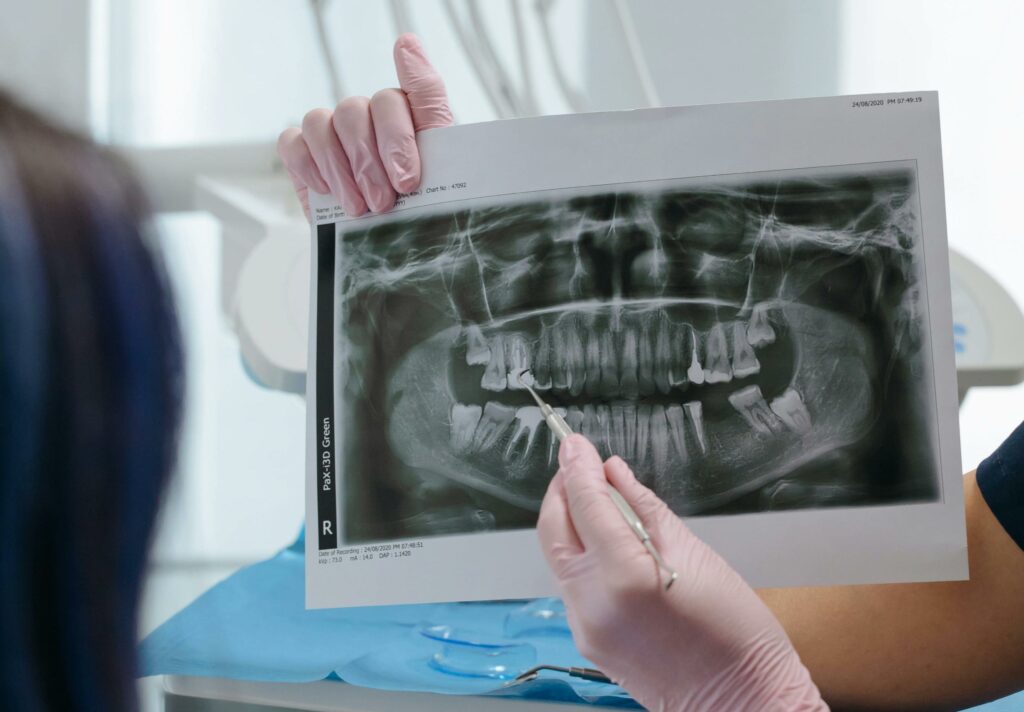As a dentist, I often encounter patients concerned about the safety of dental X-rays. Misconceptions and myths surrounding this essential diagnostic tool can lead to unnecessary worry. Patients frequently express anxiety about safety, radiation exposure, and the necessity of these images.
Today, I want to set the record straight by debunking some common myths and shedding light on the truth behind dental X-rays.
Myth 1: Dental X-Rays Are Harmful Due to Radiation Exposure
One of the most prevalent myths is that dental X-rays are dangerous due to radiation exposure. While it’s true that dental X-rays emit radiation, the levels are extremely low.
Advances in technology have significantly reduced the amount of radiation exposure, making dental X-rays very safe. In fact, the radiation exposure from a full set of dental X-rays is comparable to the natural background radiation you encounter in your daily life. Everyday radiation sources from the sun, household electronics, flights, and even some common medical procedures typically far exceed any radiation you may receive at a trip to the dentist’s office.
Additionally, modern dental X-ray equipment is designed to minimize radiation exposure. Digital X-rays, for example, reduce radiation by up to 90% compared to traditional film X-rays. Offices also employ protective measures such as lead aprons and thyroid collars to shield vulnerable areas of the body.
Myth 2: X-Rays Aren’t Necessary Unless You Have a Problem
Many patients believe that if they’re not experiencing pain, there’s no need for X-rays. However, dental problems can (and often do) develop silently.
Cavities, infections, gum disease, and other issues may not present any symptoms until they become severe. Regular X-rays help us detect issues that aren’t visible during a regular dental exam, such as cavities between the teeth, bone loss, infections at the root, and even oral cancer. Catching these problems early allows for timely and less invasive treatment, often preventing more extensive and costly treatments down the line.
During routine check-ups, X-rays are essential for monitoring the health of both your teeth and gums, ensuring we can provide you with the best possible care.
Myth 3: Dental X-Rays are Unsafe for Children and Pregnant Women
Dental X-rays are safe for both children and pregnant women thanks to modern technology and safety protocols.
For children, the X-ray dosage is adjusted to their smaller size, and the benefits of early diagnosis of issues such as impacted teeth, cavities, and bone abnormalities outweigh the minimal risks. When we catch these issues early, it results in a shorter and less scary experience for the child than if problems are able to develop to a more advanced degree where more invasive procedures need to explored.
Pregnant women often express concern about undergoing X-rays. While it’s understandable to be cautious, dental X-rays can be safely performed during pregnancy when necessary. With appropriate shielding (like a lead apron), the risk to the fetus is minimal. It’s crucial to maintain your oral health during pregnancy, as dental issues can affect both maternal and fetal health. Always discuss your pregnancy and concerns with your dentist, who can take the necessary precautions to ensure safety.
Myth 4: Dental X-Rays Only Show Cavities
While dental X-rays are crucial for detecting cavities, their importance extends far beyond that. They provide us with a comprehensive view of the teeth, jaw, and surrounding structures and can diagnose a wide variety of conditions including bone loss, impacted teeth, infections and abscesses, tumors and cysts, root fractures, trauma, and developmental issues.
Myth 5: Digital X-Rays are Riskier than Traditional X-Rays
Digital X-rays are actually safer than traditional film X-rays. They use significantly lower levels of radiation and offer enhanced image quality for better diagnosis.
Additionally, digital X-rays are quicker, more efficient, and environmentally friendly, as they eliminate the need for chemical processing.
Myth 6: Frequent X-Rays Leads to Cancer
The risk of developing cancer from dental X-rays is extremely low. The amount of radiation exposure from dental X-rays is minimal and well within the safe limits established by health organizations.
Regular dental X-rays, when used judiciously as part of your dental care, do not post a significant cancer risk. In fact, X-rays play a valuable role in the early detection and treatment of oral cancer, as they allow us to identify, assess, and monitor possible tumors.
Final Thoughts
I once had a colleague who described having a dental check-up without up to date X-rays as being akin to having a blindfolded dentist. While this may sound dramatic, these X-rays reveal hidden issues beneath the surface and without them, we cannot see the full picture of your mouth. We could potentially miss critical problems that could worsen over time without treatment. X-rays are an invaluable diagnostic tool that allow us to provide you with the best care possible.
With all the misinformation out there on dental X-rays, I very much understand my patients’ fear. Understanding the true facts about dental X-rays can alleviate these fears and promote better oral health. Remember, informed patients are empowered patients.
If you have any questions or concerns about dental X-rays, don’t hesitate to discuss them with your dentist. Your health and safety are always our top priority.
Are there any more dental myths you’d like me to discuss? Let me know in the comments below!

